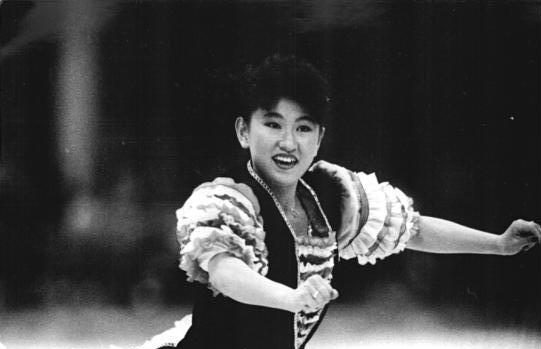From leather skates to modern greats: The last 50 years of history in figure skating
4000 years ago, people in Finland used pieces of wood or bone to cut travel time when hunting, and thus proto-ice skating was born.
However, figure skating in its current form did not originate until 1772 when Lt. ‘Captain’ Robert Jones wrote A Treatise on Skating and designed boots you could screw blades on. 200 years later, in the 1970s, figure skating was, for the most part, developed.
Figure skating is a sport in which ice skaters, on their own, in pairs, or in groups, perform jumps, spins, and footwork in a coordinated programme. But these last 50 years have proven to be a period of transformation, innovation, and evolving standards.
The 1970s brought the shift from traditional figure skating to freestyle skating. Freestyle skating, unlike traditional figure skating, places a greater emphasis on jumps, spins, and footwork rather than on executing intricate circles and loops on the ice. Skaters are also scored on a broader range of elements. This made skating more athletic and interesting to watch.
The technology in ice skates and that used for training is rapidly improving..
The 1970s also brought technological advancements to the design of the ice skates themselves. While up until this point boots were made of leather, lighter materials such as fiberglass and plastic began to be incorporated into ice skates’ design. These made ice skates more durable, flexible, and lightweight, making jumps easier and movements more precise. Ice dancing, a discipline inspired by ballroom dancing, became an Olympic sport in 1976.
The 1980s saw a huge increase in technical innovations for figure skating. Landing triple jumps – where the skater needs to make three full rotations in the air – became more important, with some skaters even practicing quadruple (or quad jumps) where skaters made four full rotations in the air.
In the 1988 World Championships, the Canadian Kurt Browning landed the first quad toe loop – a jump where the skater begins facing forward, switches into a backwards-facing position, before taking off from the skater’s right back outside edge and left toe pick, rotating four times before landing on a backwards right outside edge.
In 1988, history was also made when Midori Ito became the first woman to land a triple Axel in competition. The Axel is figure skating’s most difficult jump, where the skater takes off from a forward position, and rotates one-and-a-half times (or three-and-a-half in the case of a triple jump) before landing on the backwards right outside edge.
At the same time, synchronised skating was invented. A team-based sport, it combined elements of figure skating with synchronised movements and led to the creation of synchronised skating competitions.
The 1990s saw figure skating rise to the global stage as a response to the rivalry between figure skaters Tonya Harding and Nancy Kerrigan during the 1994 US Figure Skating Championship, where Kerrigan’s shins were attacked by Shane Stant and Derrik Smith – contracted by Jeff Gillooly, Harding’s ex-husband, and Shawn Eckhardt, her bodyguard.
Kerrigan was forced to pull out of the competition. The case became one of the biggest sports scandals in history and led to an increase in the popularity of ice skating. Moreover, broadcast and television meant skaters like the aforementioned Harding and Kerrigan, as well as others such as Midori Ito and Yuna Kim, achieved celebrity status.
By the 2000s, technology was fully incorporated into the sport, with skaters using computer-assisted training and tracking software for performance analysis, allowing them to receive instant feedback and thus enabling them to refine their techniques and push the boundaries of what was possible on the ice.
The introduction of the International Judging System (IJS) in 2004 also meant scoring became more objective and thus figure skaters were rewarded for their technical skills and execution, and bias was removed.
Since the 2010s, figure skating has seen a significant increase in skaters’ athleticism. Quad jumps have become more common and both male and female skaters, such as Alexandra Trusova, have landed quad toe loops, quad Lutzs, and quad flips in international competitions.
As for what’s going to happen in the next 50 years of figure skating? Who knows. Quintuple jumps could be on the horizon, with two-time world champion Nathan Chan already attempting them. The technology in ice skates and that used for training is also rapidly improving, and new materials and techniques are being tested regularly. But physics and the limitations of the human body aside, the sky is the limit.

Comments